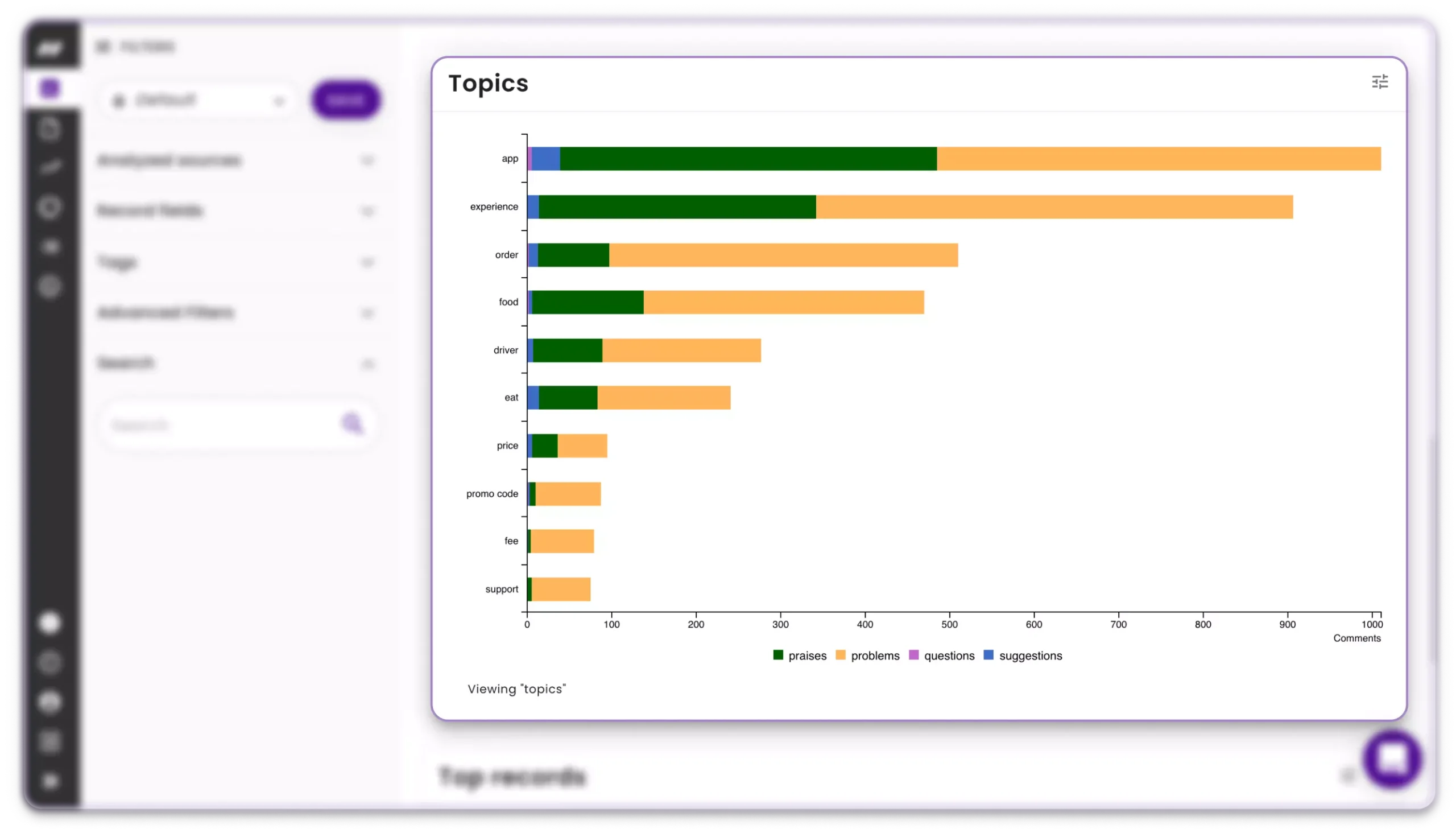Customer experience (CX) refers to how a business interacts with customers at every point during their customer journey, ranging from marketing to customer service. It also plays a critical role in sentiment analysis.
It’s valuable to measure and improve the experience of your customers. Approximately 84% of businesses that work to improve customer experience metrics report an increase in revenue.
Those who had a great experience with your company will often leave positive reviews that help bring in more customers, but the opposite is also true. Bad reviews can make a potential customer opt for your competitor.
1. What is customer experience?
The exact definition of customer experience might vary depending on who you ask, but generally, it is the outcome of every customer interaction from start to finish. Every touchpoint is an opportunity to improve or ruin your customers’ experience.
Every interaction with customers needs to be scrutinized for how it will impact their overall experience. Everything needs to be examined, from an easy-to-use checkout process to a customer service team that’s responsive and knowledgeable.
When customers think about your company, they aren’t thinking exclusively about pricing or product quality. Instead, they’re usually having an emotional reaction to how everything went. It’s important to remember that customer sentiment is as crucial as bounce rates and abandoned carts.
2. Why does customer experience matter?
CX has become increasingly vital as many products and services have become commodified. As a result, customers who have a bad experience have other options, while those with a great experience will often leave positive reviews and come back for more.
What are customers’ opinions of your company? Some of the essential factors that influence opinions are:
- Are your marketing campaigns addressing pain points and desires?
- Is your eCommerce platform easy to use?
- Does everyone who interacts with customers have access to the correct information to serve the customer? Or are customers forced to provide the same information repeatedly?
- Is your company trustworthy? You’ll need to understand your consumer feedback to answer this question honestly.
Let’s examine the difference between a good and bad experience to explore why it matters more than you might think.
What is a Bad Customer Experience?
A negative experience makes customers feel angry, disappointed, or unhappy. These emotional responses stem from feeling abandoned after the sale or that your business is challenging to deal with. Some common reasons why customers develop adverse reactions are:
- Your website or app is frustrating, ranging from poor loading speeds to bad design or a hard-to-find return policy.
- Your products or services don’t match the description or expectations set by your marketing campaigns.
- Customer service is slow to respond or unhelpful.
A bad experience often results in returns, which directly impact your revenue. But they can also lead to bad public reviews, which have a lasting impact on acquiring future customers.
What is a Good Customer Experience?
So, what’s a good customer experience? An intuitive website, quality product, and fast customer service certainly play a role.
Prioritizing a positive experience at every step is essential. Think about any brand with a loyal following, such as Starbucks or Apple. These two companies had focused on a great customer experience long before it was called ‘CX.’ How?
- Apple’s iOS was designed for usability from the beginning. Even before the first iPhone, Macs and iPods brought gadgets to less-tech savvy customers.
- Starbucks has universal policies and procedures that give customers a reliably pleasant experience and a great cup of coffee regardless of the location.
- Both companies address negative experiences and even bad press to manage their reputations.
3. What is a customer experience strategy?
Marketing campaigns have clear goals and objectives, so should a CX strategy. Yet, unlike marketing campaigns, CX is an ongoing process. You can have milestones, but providing customers with a great experience should always be prioritized.
A CX strategy is multi-faceted, including:
- Clearly defined goals based on quantifiable data
- C-Suite buy-in and support
- A customer-centric mindset for every employee who interacts with customers
- The right customer experience management tools to understand the customer’s journey and reaction to it
- Monitoring and responding to public feedback, such as Amazon, Google Maps, or TrustPilot reviews
What Are Customer Experience KPIs?
One of the above aspects of a CX strategy is obtaining quantifiable data. What metrics should you track? Some KPIs that many businesses will have readily available are:
- Overall revenue growth
- Customer service costs
- Conversion rate
- Customer retention and customer churn
- Contact center resolution time
- Net promoter score, or NPS analysis (response to a simple post-sale survey)
- Other metrics that reflect site or app usability, such as loading speed and bounce rate
4. What is customer experience management?
Ready to go a step beyond standard KPIs? Tools focused on CX will help you understand customers’ sentimental reactions to working with your company. Customer experience management solutions are necessary to truly quantify the sentiment of your customers. In addition, text analysis of customer reviews can create valuable insights into the collective opinion about your company.
[Further reading: 4 industry application of customer experience analysis]
5. How does Keatext improve customer experience?
Improving customer experience always begins with a complete understanding of your customer feedback channels, then moving to analysis and prioritizing the most impactful actions to take. We built Keatext to check all those boxes!
Our sentiment analysis solution provides multichannel support, integration functionality, ROI-driven recommendations, and dashboard customization to make your journey from uploading data to taking action as efficient as possible. With a strong out of the box AI foundation, Keatext helps you see ROI from working on CX.



